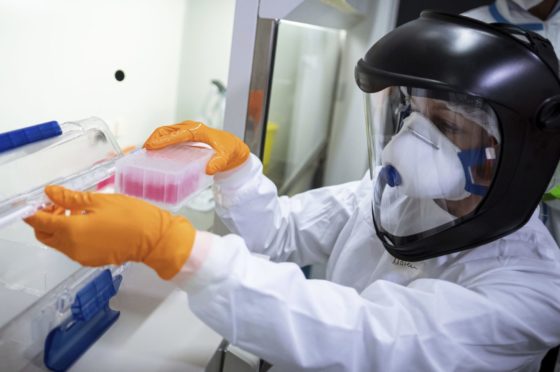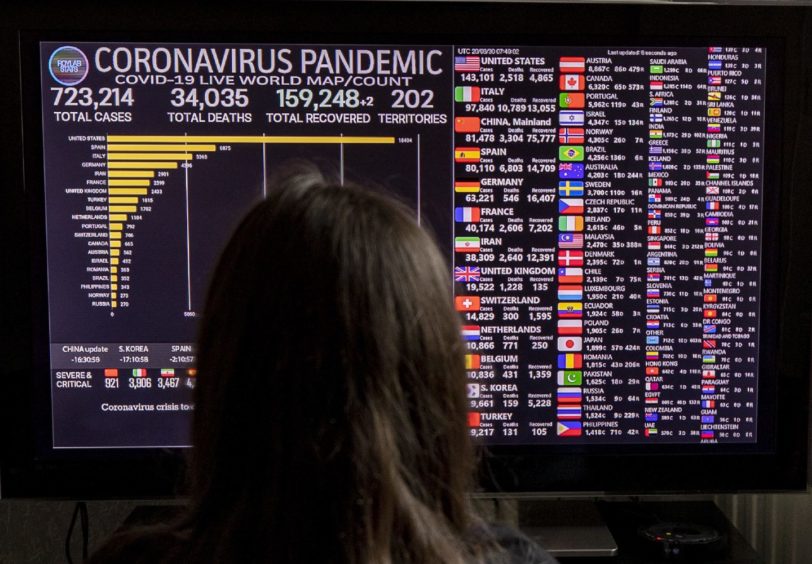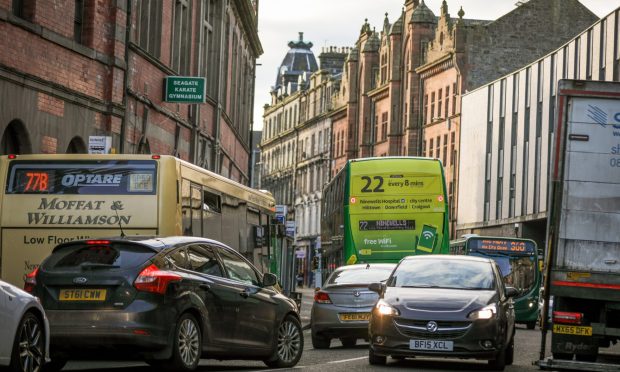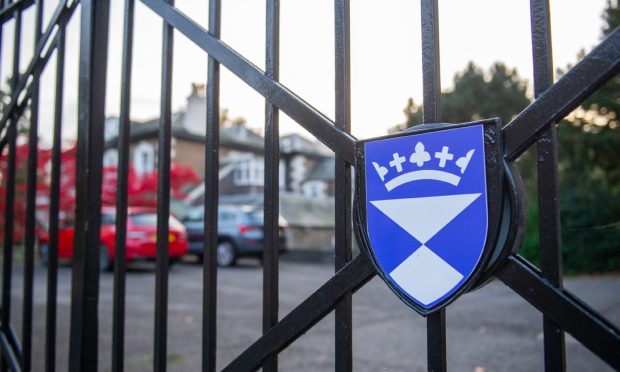The R-number has gained notoriety in recent weeks for its role in providing important evidence on which politicians will base decisions on easing Scotland out of lockdown.
The reproduction value helps to provide politicians with insight on what restrictions should be in place while governments across the world battle the virus and is dictating, to an extent, when these might be lifted.
In simple terms, the R-number measures the average number of people an individual would be expected to infect at a point of time during an epidemic such as the Covid-19 crisis.
Before the lockdown measures were introduced on March 23, the R-number was estimated to be at around four or six in Scotland, but is understood to have dropped to between 0.7 and one.
Crucially, anything above one means the virus is spreading in the population so efforts are being focused on keeping the value below one to prevent the virus spreading across the population again.
We heard from Scotland’s chief statistician, Roger Halliday, during a briefing to the media on Thursday to explore what it all means.
What is the R-number?
The reproduction level, or R-number, is a measure of the average number of people that will be infected by one individual with Covid-19.
If the R-number was above one it would show the virus is spreading in the population and if it is below one it is declining in the population in terms of the number of cases.
It is affected by a number of factors, including the number of people the infected person is in contact with.
The Scottish Government’s chief statistician, Roger Halliday, said this should “decrease over time” as people become infected.
If 50% of the population has been infected then the R should be half of what it was at the start of the epidemic.
How is the R-number measured?
This is calculated on a two-step process.
Firstly, information about deaths is used with information about the progression of Covid-19 to estimate the number of infectious people.
Secondly, the day-by-day changes in the numbers of infectious people are used to estimate R.
The government’s approach draws upon publicly available information using a publicly available pyramid model from the Imperial College of London to understand how the epidemic is spreading in Scotland and its impact.
Given the levels of uncertainty involved, modelling outputs are used from a number of different academic groups including the London School of Hygiene and Tropical Medicine, the University of Warwick and the University of Manchester.
In Scotland a team of experts has been assembled from across government and public agencies, who are also working with government modelling teams in each country across the UK.
To get the R-number, the team run a model once a week using probably the “most powerful computer in Scotland, if not the UK”, Mr Halliday said.
To give an indication, the model was run last weekend, taking 56 hours.
Mr Halliday said while in theory it would be possible to look at what the R level is at a local area level, it would come with “significantly more uncertainty”.
The government does not use the R-number in isolation to calculate the path of the virus, it also uses data on the number of cases, the number of ICU beds used and the number of deaths, which are published every day.
The other way of calculating the R rate is to test a random sample of the population, which the Office of National Statistics has started to do, but this is also associated with significant uncertainty.
How has the R-number changed over time?
The Scottish Government started modelling the spread of the virus in early March and got estimates back to the end of February, Mr Halliday said.
The latest estimate from May 8 shows the R-number is between 0.7 and 1.
Before the stay at home public health restrictions were put in place, the R-number was above one, and was calculated as being between four and six.
This came down “pretty immediately” once the stay at home message was introduced, as people were no longer out meeting other people and that was an “important factor” in the spread of the virus, Mr Halliday said.
In terms of what level of R-number could see a loosening of restrictions, Mr Halliday said every change would have a “different effect on R”.
He added: “As we made out in the framework of decision making we published on May 7, we need to look at a much wider range of data than just the R value.
“One of those things would be around infectious cases as well as the R value but ultimately the choice about what to do and what is considered safe and the balance between lifting restrictions is a choice for ministers.”
How does the R-number in Scotland compare to other parts of the UK?
Scotland is understood to have a slightly higher R-number than other parts of the UK, including England.
On May 10 Prime Minister Boris Johnson said the R-number in England was estimated at between 0.5 and 0.9.
Mr Halliday said this could be down to a number of factors including the age profile of the country and the timing of the virus.
He said: “We know the first case in Scotland was later than in England and I think that’s going to be a factor here and what’s happening in communal establishments such as hospitals and care homes also contribute to R.”
Given the high level of deaths in care homes, do statisticians know what the R rate is in care homes?
Scottish Government modellers have said they do not have a clear estimate on the R-number in care homes but they are working with academics on this.
He said: “That is not just something we are not clear about, people across the UK are in the same position.”
Professor Chris Robertson of the University of Strathclyde, who sits on the Scottish Government’s Advisory Group, added that it is “phenomenally difficult” to separate out data for the three separate epidemics happening across the country: in the community, in hospitals and in care homes.
He said: “In order to get estimates for each of these separately, you have to somehow model the interactions between these and getting good data in real time at the minute is very difficult.
“For investigation of the R rate specifically within care homes, one of the ways of doing that is looking at outbreaks in care homes and finding the index case and subsequent infections from that and then averaging over lots of care homes and that is a very difficult data collection exercise.”
He added that it would take “maybe two to three months’ time” to have validated Scottish data on care homes.
However, journalists were told that much more research was going into calculating the spread of the virus in care homes beyond calculating the R-rate, including looking at daily estimates of infected cases.
Professor Hugh Pennington, a leading microbiologist based in Aberdeen, said last month that the infection rate in care homes could be 10 times higher.
But Mr Halliday said that is based on “speculation”.
Why is the R-number so important?
The R-number is at the heart of the First Minister’s decision-making process when it comes to easing lockdown restrictions.
She has previously said the Scottish Government is not confident that R is comfortably below one, but instead is “hovering around one”.
Speaking last week, Deputy First Minister John Swinney said the number he had seen then was 0.8, which he said was “far too close” to one for Scotland to relax any lockdown measures.
When a lockdown is lifted or relaxed then inevitably the R value goes up, as has been seen in other countries emerging from lockdown, including Denmark, which saw its R-number increase from 0.6 to 0.9 since schools were reopened.
Since it is the last European country out of full lockdown, UK scientists have the advantage of using real-world data from other countries to help guide their decision-making going forward.
However, the first minister was keen to stress during her briefing on Thursday that along with the R-number, the number of infections in the community, is another factor under consideration in any consideration of lifting lockdown measures.











